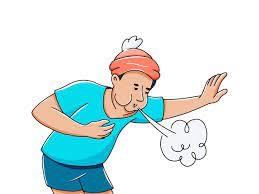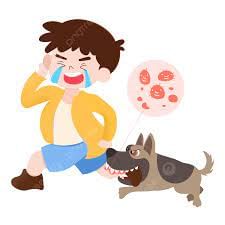Safety and First Aid - 1 Class 5 Worksheet Science
Q1: Multiple Choice Questions (MCQs).
Choose the correct option for each question.
(i) Which of the following is NOT a type of burn?
(a) Chemical burn
(b) Electrical burn
(c) Thermal burn
(d) Static burn
Ans: (d)
A static burn is not a recognized medical term or type of burn in the field of first aid or medicine. Chemical, electrical, and thermal burns are the three types of burns.
(ii) What should you do if someone is choking?
(a) Give them water to drink
(b) Perform the Heimlich maneuver
(c) Tell them to cough harder
(d) Do nothing, let them handle it
Ans: (b)
The Heimlich maneuver is a first aid procedure used to dislodge an object that is obstructing the airway.
(iii) What is the first step in treating a minor cut or scrape?
(a) Apply pressure to stop bleeding
(b) Clean the wound with soap and water
(c) Put a bandage on it
(d) Apply an antibiotic ointment
Ans: (a)
The first step in treating a minor cut or scrape is to apply pressure to stop the bleeding.
(iv) What is the purpose of a sling in first aid?
(a) To support a broken or dislocated arm
(b) To hold ice packs in place
(c) To wrap around a sprained ankle
(d) To cover a wound
Ans: (a)
A sling is used in first aid to support a broken or dislocated arm and to prevent further injury.
(v) In case of a fire, what should you do if you are inside a building?
(a) Hide under a table
(b) Run as fast as you can
(c) Stay low and crawl to the nearest exit
(d) Climb onto the roof
Ans: (c)
Staying low and crawling to the nearest exit helps to avoid inhaling smoke and toxic gases during a fire.
Q2: Fill in the Blanks.
(i) ________ is the immediate help given to an injured person.
Ans: First aid is the immediate help given to an injured person.
(ii) A person who is not breathing can be saved by using ________.
Ans: A person who is not breathing can be saved by using CPR.
(iii) If someone has swallowed poison, they should be made to ________.
Ans: If someone has swallowed poison, they should be made to vomit.
(iv) Touching a live electric wire can cause a person to experience an ________.
Ans: Touching a live electric wire can cause a person to experience an electric shock.
(v) The emergency phone number for an ambulance is ________.
Ans: The emergency phone number for an ambulance is 108.
Q3: Match the Column.

Ans: (i) First Aid - (d) Immediate Help
(ii) CPR - (c) Cardiopulmonary Resuscitation
(iii) Electric Shock - (b) Fire
(iv) Emergency Phone Number - (a) 108
Q4: True or False.
(i) First aid can only be given by a doctor or a nurse.
Ans: False
First aid can be given by anyone who has knowledge of basic first aid techniques, not just doctors or nurses.
(ii) A person with a minor injury should be taken to the hospital immediately.
Ans: False
A person with a minor injury can usually be treated with first aid and may not need to be taken to the hospital immediately.
(iii) If someone is choking, you should perform the Heimlich manoeuvre.
Ans: True
If someone is choking, you should perform the Heimlich manoeuvre to help clear their airway and allow them to breathe.
(iv) You should pour water on a person who has caught on fire.
Ans: False
Pouring water on a person who has caught on fire can make the situation worse. Instead, you should use a fire blanket or fire extinguisher to put out the flames.
(v) It is safe to touch a person who is experiencing an electric shock.
Ans: False
It is not safe to touch a person who is experiencing an electric shock as you could also get shocked. Instead, turn off the power supply or use a non-conductive object to separate the person from the source of electricity.
Q5: Short Answer Questions.
Answer the following questions in one or two sentences.
(i) What is first aid, and why is it important?
Ans: First aid is the immediate care given to a person who is injured or suddenly becomes ill. It is important because it can save lives, prevent further harm, and promote recovery.

(ii) How can you prevent accidents from happening at home?
Ans: To prevent accidents at home, keep the environment clean and clutter-free, store dangerous items (such as chemicals and sharp objects) out of children's reach, install safety devices (such as smoke detectors and guards for windows), and supervise children closely.
(iii) What should you do if you get a nosebleed?
Ans: If you get a nosebleed, sit up straight, lean your head slightly forward, and pinch your nostrils together using your thumb and index finger. Hold the pressure for about 10 minutes without releasing, and avoid lying down or tilting your head back.
(iv) What are some common signs of a fractured bone?
Ans: Common signs of a fractured bone include pain, swelling, bruising, deformity, inability to move the affected area, and sometimes an audible snap or grinding noise at the time of injury.
(v) What should you do if you encounter a wild animal while outdoors?
Ans: If you encounter a wild animal while outdoors, stay calm and do not approach or provoke the animal. Make yourself appear larger by raising your arms and standing on your tiptoes, and speak firmly and calmly. Slowly back away without turning your back on the animal, and avoid direct eye contact as it can be seen as a threat.
Q6: Long Answer Questions.
(i) What is Rabies?
Ans: Rabies is a viral disease that affects the central nervous system of mammals, including humans. It is primarily transmitted through the bite or scratch of an infected animal, most commonly through dogs, bats, raccoons, and other wild animals. The virus attacks the brain and spinal cord, leading to severe neurological symptoms and, if left untreated, it is almost always fatal. Rabies can be prevented through vaccination for both humans and pets, and immediate medical attention is crucial if someone is bitten or scratched by an animal that may be infected with rabies.
(ii) What should be done when a poisonous snake bites a person?
Ans: If a poisonous snake bites a person, the following steps should be taken:
- Stay Calm: The person who has been bitten should try to stay as calm and still as possible to slow down the spread of venom.
- Seek Medical Help: Immediately call for emergency medical assistance or take the person to the nearest hospital or healthcare facility.
- Keep Still: Encourage the person to keep the affected limb still and at or below heart level to reduce the spread of venom.
- Remove Constrictive Items: Remove any tight clothing, jewellery, or accessories from the affected limb, as swelling may occur.
- Do Not Try to Suck or Cut the Bite: Traditional methods like trying to suck out the venom or cutting the wound are not recommended as they can worsen the situation.
- Do Not Apply Ice: Applying ice to the bite area is also not recommended.
(iii) How can we put out a fire caused by electricity?
Ans: Fires caused by electricity are unique and require special precautions for extinguishing them. To put out a fire caused by electricity, follow these steps:
- Do Not Use Water: Never use water to extinguish an electrical fire, as water is a conductor of electricity and can result in electric shock.
- Cut Off the Power: If possible and safe to do so, disconnect the power source or turn off the electrical equipment that is causing the fire.
- Use a Fire Extinguisher: Use a Class C fire extinguisher, specifically designed for electrical fires. These extinguishers use non-conductive substances to smother the fire.
- Use a Fire Blanket: In case of small electrical fires on appliances, you can use a fire blanket to suffocate the flames and cut off the oxygen supply.
- Call for Help: Even if you manage to extinguish the fire, always call the fire department to inspect the situation and ensure there is no risk of reignition or hidden damage.
(iv) Why should water not be used to put out a fire caused due to kerosene?
Ans: Water should not be used to put out a fire caused by kerosene or any other oil-based fire for the following reasons:
- Ineffectiveness: Water does not mix well with oil, so it cannot cool down or extinguish fires fueled by kerosene or other flammable liquids effectively.
- Risk of Spreading: Using water on an oil-based fire can cause the burning liquid to splatter and spread the fire to a larger area.
- Explosions: When water is applied to hot oil or kerosene, it can vaporize and create steam. This sudden expansion can lead to an explosive effect, causing the burning liquid to spread even further.
To extinguish a kerosene fire, use a Class B fire extinguisher designed for flammable liquids or smother the flames with a fire blanket.
(v) What should be done when a person’s clothes catch fire?
Ans: If a person's clothes catch fire, they should follow the "Stop, Drop, and Roll" procedure:
- Stop: The person should immediately stop moving to prevent the fire from spreading further.
- Drop: Without panicking, the person should drop to the ground or floor.
- Roll: Once on the ground, the person should start rolling over and over, covering their face with their hands. This action will help smother the flames and reduce the oxygen supply to the fire.
- Cool the Burns: After the flames are extinguished, cool the burned areas with running water for about 10-20 minutes. This will help reduce the severity of burns and provide relief.
- Seek Medical Attention: Even if the burns appear minor, it is essential to seek medical attention as soon as possible to assess and treat the injuries properly.
|
42 videos|230 docs|45 tests
|
FAQs on Safety and First Aid - 1 Class 5 Worksheet Science
| 1. What are the basic first aid steps for treating a minor cut? |  |
| 2. How can I help someone who is choking? |  |
| 3. What should I do if someone faints? |  |
| 4. How do I treat a burn at home? |  |
| 5. What are the signs of a serious allergic reaction? |  |





















